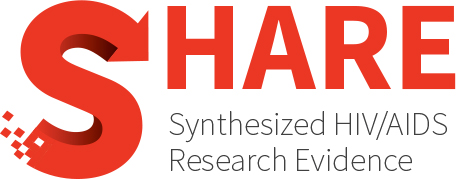Category Archives: Education/media campaigns
HIV, hepatitis, and syphilis self-testing among adolescents and young adults: A systematic review and meta-analysis
Background: Adolescents and young adults (AYA) make up a significant share of the world’s burden of HIV and other sexually transmitted infections (STI). Self-testing can increase testing coverage and strengthen the...
Adolescents’ sexual health during the COVID-19 outbreak: A systematic review
BACKGROUND AND AIMS: The COVID-19 pandemic has greatly disrupted adolescents’ access to sexual health services, resulting in a decline in their overall sexual well-being. This systematic review explored adolescent sexual...
Use of behavior change techniques in digital HIV prevention programs for adolescents and young people: Systematic review
BACKGROUND: HIV infections have caused severe public health and economic burdens to the world. Adolescents and young people continue to constitute a large proportion of newly diagnosed HIV cases. Digital...
Effectiveness of digital health interventions in promoting the pre-exposure prophylaxis (PrEP) care continuum among men who have sex with men (MSM): A systematic review of randomized controlled trials
PURPOSE OF REVIEW: Digital health interventions have demonstrated great potential to advance HIV prevention and care. However, their effectiveness in improving the pre-exposure prophylaxis (PrEP) care continuum has not yet...
Technology-assisted interventions in the delivery of HIV prevention, care, and treatment services in sub-Saharan Africa: Scoping review
BACKGROUND: Sub-Saharan Africa (SSA) accounts for up to 67% of the global HIV burden yet grapples with health system challenges like distant health facilities, low doctor-to-patient ratio, and poor or...
Gastrointestinal Escherichia coli in men who have sex with men: A systematic review
OBJECTIVE: This systematic review aimed to explore any demographic, biological and behavioural characteristics of men who have sex with men (MSM) with diarrhoeagenic E.coli. DESIGN/METHODS: We searched MEDLINE, EMBASE, and...
Four decades of overdose prevention centres: Lessons for the future from a realist review
BACKGROUND: Overdose prevention centres (OPCs) are spaces where people can consume previously obtained illicit drugs under the supervision of staff who can intervene to prevent and manage overdose.AÿThey have been...
Impacts of the COVID-19 pandemic on the HIV care continuum and associated factors in high-income nations: A mixed-methods systematic review
The COVID-19 pandemic has significantly impacted the HIV care continuum (HCC), presenting challenges while also driving positive transformations globally. This study examines the impact of the COVID-19 pandemic on HCC...
PrEP uptake and utilisation among adolescent girls and young women in Sub-Saharan Africa: A scoping review
Adolescent girls and young women (AGYW) in sub-Saharan Africa (SSA) are disproportionately affected by HIV. Despite the effectiveness of oral pre-exposure prophylaxis (PrEP) in preventing HIV, uptake and effective utilisation...
Climate change and HIV prevention: Towards sustainable solutions—A narrative review
Climate change, with its pervasive environmental, social, and economic impacts, is emerging as a significant factor influencing global health outcomes, including the prevention and management of HIV. The intersection of...
Technology-based HIV prevention interventions for men who have sex with men: Systematic review and meta-analysis
BACKGROUND: There remain unmet HIV prevention needs in China, particularly among gay, bisexual, and other men who have sex with men. Technology-based interventions are increasingly used in HIV prevention worldwide....
